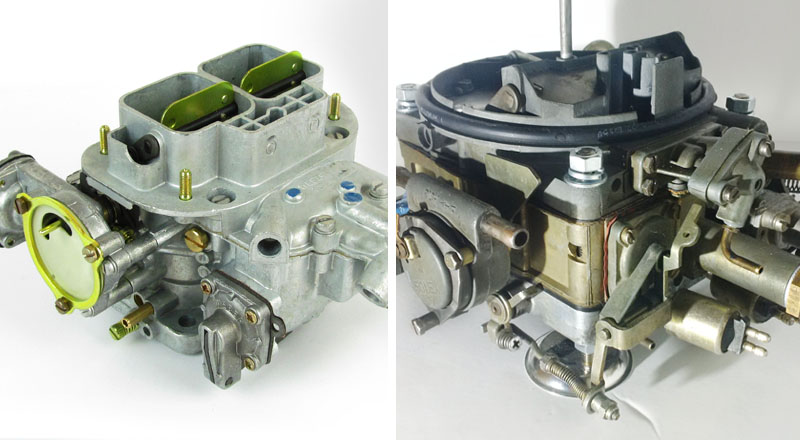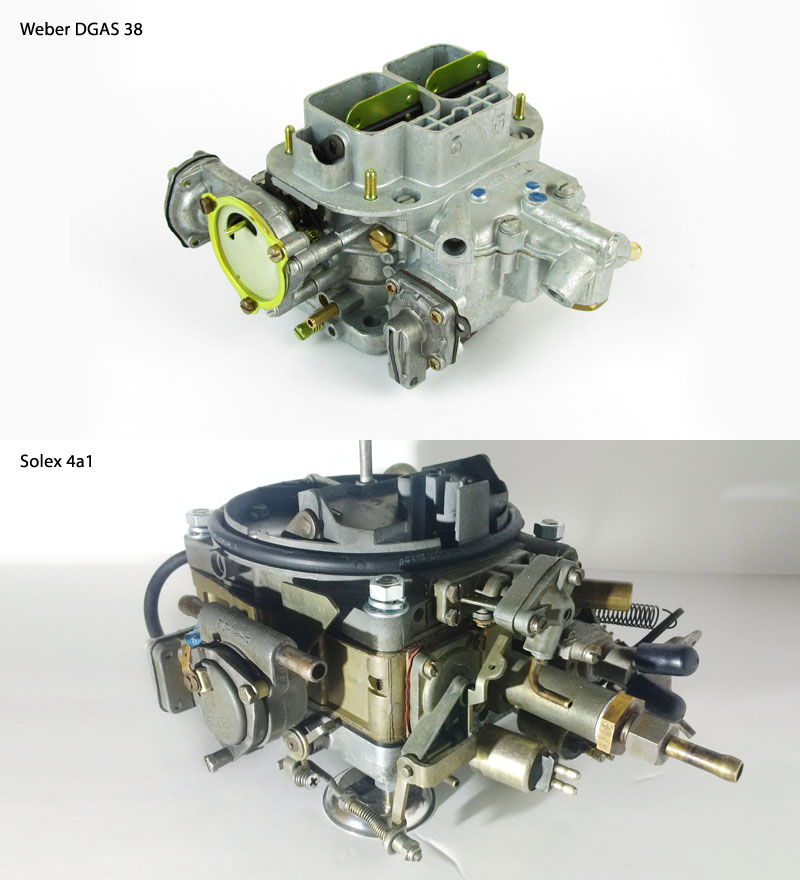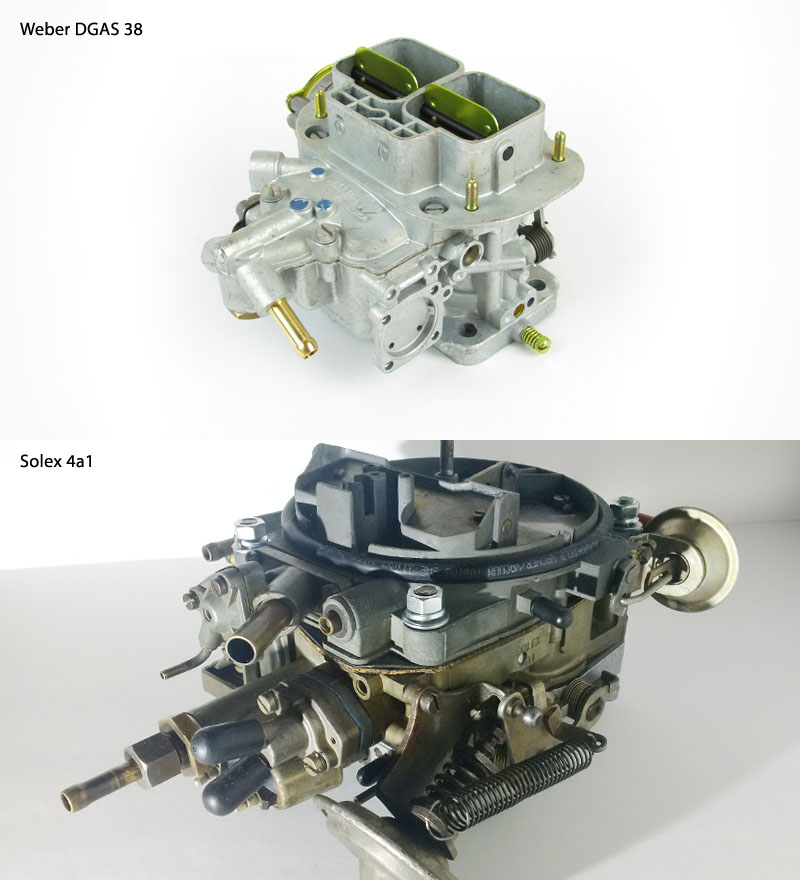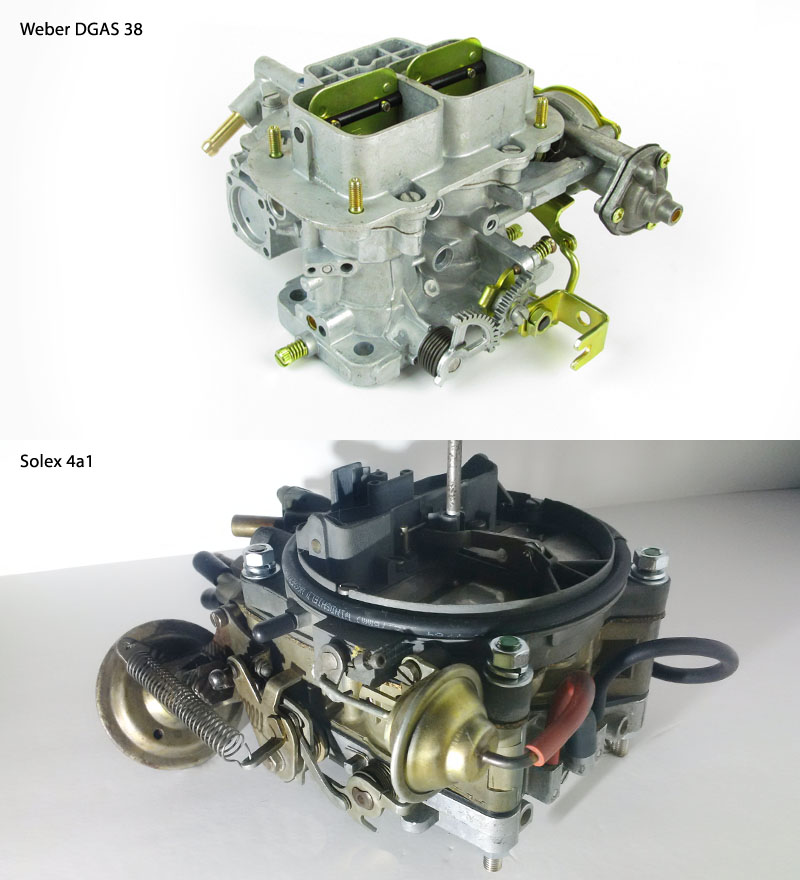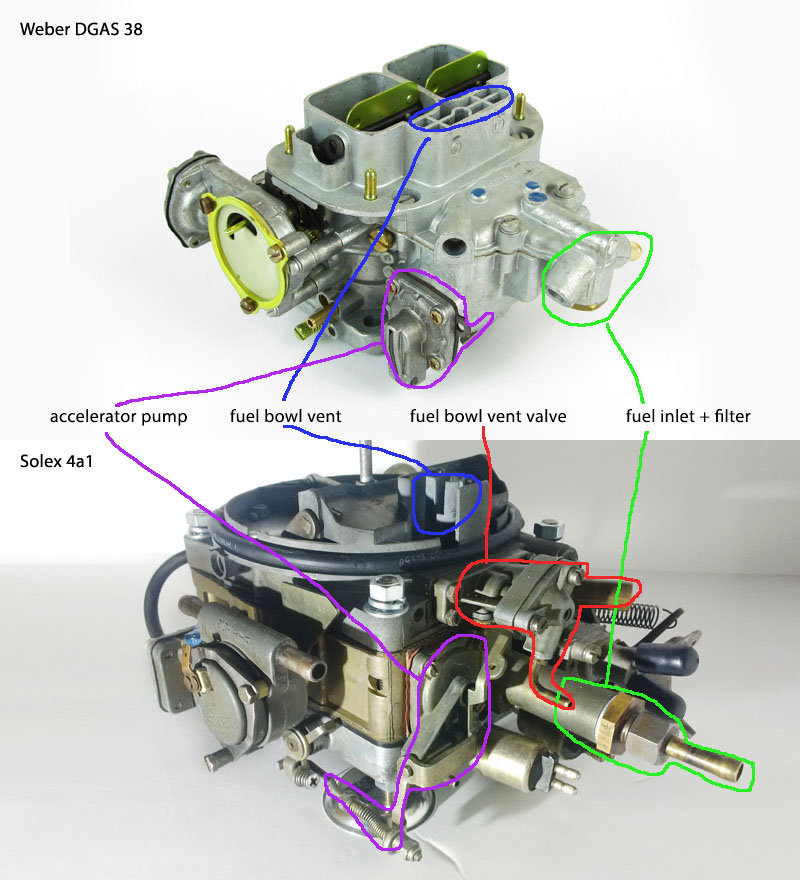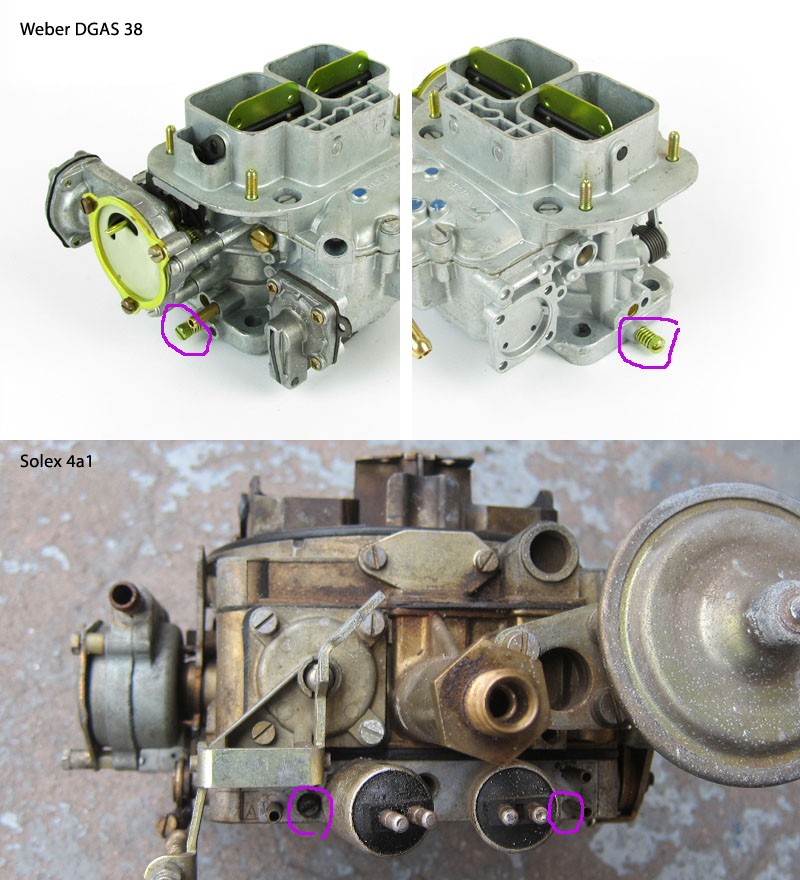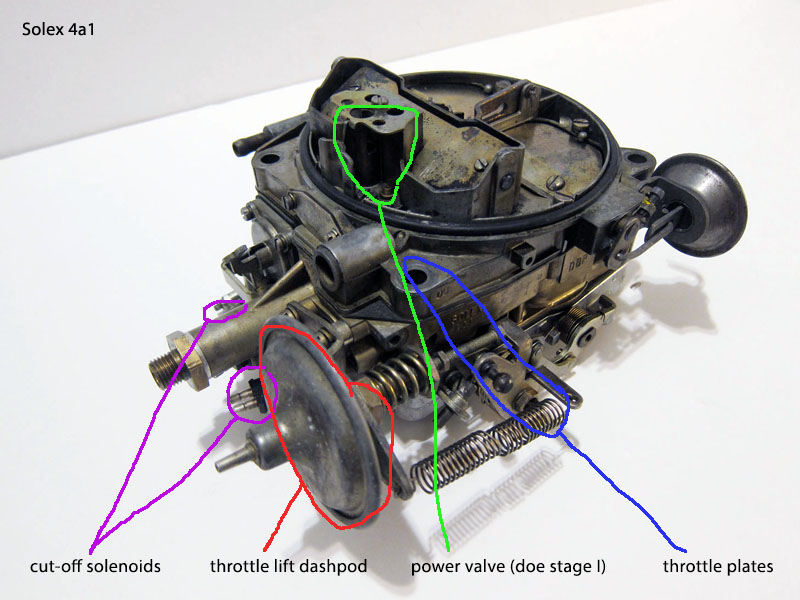 |
| Home |
Comparisons of Weber 38 to Solex 4a1
Both carburetors, Weber 38 DGES and Solex 4a1, despite difference in appearance, operate more or less in a similar manner. Fundamental difference between the two is that Weber is 2 throats carburetor while Solex has 4. In regular driving conditions only 2 smaller ones are used and the secondary larger throats open only at higher engine demands. This design lets Solex be more efficient at lower RPMs and still deliver needed power (and fuel) when needed. Here are three comparable views of both carburetors.
View 2:
View 3:
Both carbs have choke plates (to choke the engine when its cold - here in pic below, Weber has the choke plates open while Solex has them closed); choke-pull off (to open the choke slightly immediately after engine starts); choke spring housing (Weber in the pic is missing it while Solex has water-assisted housing attached that require air coolant be flowing through the housing); fast idle speed screw (to hold THROTTLE plates more open when engine is cold and the choke is engaged).
Both (pic below) have accelerator pump (Solex's can be easily adjusted with a screw), internal fuel bowl vent and fuel inlet (Weber's can be re-positioned to face right or left) with filter. In this specific setup Solex also has fuel bowl external vent valve to vent the fuel preventing hard re-start on a hot day. The water-assisted choke heats up Solex way more than Weber so no matter what, in my experience Solex is always a bit harder to start on a hot day than even un-vented Weber.
Both have idle speed screws at the base bottom to manipulated how much fuel gets sucked in by each carb throat at idle. NOT, if you are new to carbs, don't confuse idle speed screw with FAST idle speed screw as they have different functions. Idle speed controls RPM when engine is warm, fast idle speed screw controls engine speed when the engine is cold and choke is engaged.
Now onto differences. Solex has more components making it a more sophisticated fuel-delivery device but also more difficult to troubleshoot.
The rest of the "extras" on Solex revolve around the II stage that isn't part of Weber's design. Air flaps are NOT chokes- they should stay shut when engine exercises vacuum on the secondaries pod. Secondaries enrichment rods increase fuel intake at higher RPMs. There is a cam on Solex that prevents opening of secondaries before engine fully wartms up to prevent people from pushing engine too far when it osn't ready to give up all its power.
|
| copyright 2019 by Patryk Rebisz |
